




 |
 |
 |
 |
 |
 |
Omega (1973, 34.24/71.11) ***½/T½ (TT) |
|
| Everytime She Steps in After a Hard Year Delicate Sweep Parting Song The Bird The Lying Girl White Magic Stone [Expanded CD adds: Pearls in Her Hair |
Törékeny Lendület (live) Die Nächtliche Landstraße Sie Ruft Alle Tage Herbei Nur ein Wort Reise auf dem Grauen Fluß Perlen im Haar Perlen im Haar (instrumental) Snuki] |
|
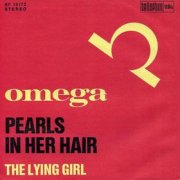 |
7" (1973) ***½/TT Pearls in Her Hair The Lying Girl |
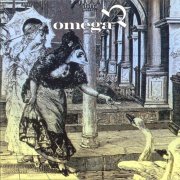 |
200 Years After the Last War (1974, 35.57) ***½/TTSuiteHelp to Find Me 200 Years After the Last War You Don't Know |
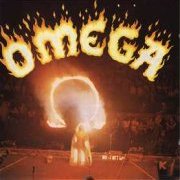 |
Omega III (1974, 32.36) ***/T½Stormy FireSpanish Guitar Go on the Spree Remembering Everytime She Steps in Live as Long as Just a Bloom I Go Away Fancy Jeep |
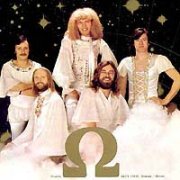 |
Omega 8: Csillagok Útján [a.k.a. Skyrover] (1978, 36.12) ***/TNyitányÉgí Vándor Léna Légy Erős! Metamorfózis I Bíbor Hölgy Csillagok Útján Metamorfózis II Finálé |
 |
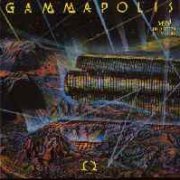 |
Gammapolis/Omega 9 (1979, 41.32) ***½/TDawn in the City (Hajnal a Város Felett)Lady of the Summer Night (Nyári Éjek Asszonya) Rush Hour (Őrültek Órája) Return of the Outcast (A Száműzőtt) Start Gammapolis (Gammapolis 1) The Man Without a Face (Arcnélküli Ember) Silver Rain (Ezüst Eső) Gammapolis 2 |
Current availability:
Mellotrons used:
Omega's origins, like so many of their Western contemporaries, go back to their days as a beat group in the early/mid-'60s, eventually catching up with their British and American mentors in the early '70s, becoming a bit of a catch-all heavy/progressive outfit. It must have been incredibly difficult to operate behind the Iron Curtain at that time; I would guess that they were at least partially state-sanctioned - allowed to exist as 'proof' that the Hungarian regime was hip and 'with it, man' and didn't really torture dissidents to death in underground cells. This is no slur on the band; in fact, all respect to them for having the courage to follow their muse under such harsh conditions. They certainly managed several things denied to most other East European outfits, not least owning decent equipment, the chance to sing in English and record and release albums in the West.
There was immense confusion (at least in this household) over their catalogue; their domestic and foreign releases frequently bore little relation to each other, tracks from several different Hungarian LPs being grouped together randomly on each Western album, until the two halves of their career reunited (musically, at least) with 1976's Time Robber/Omega 7: Időrabló. However, the excellent discography that used to be found at Gammapolis.de, a fan site better than many official ones, has helped set things straight. Just to add to the confusion, the musician credits on Omega reverse all the names, though I think I've sorted this one out. Also (groan), a 1975 album also called Omega, also released on their German label, Bacillus (along with Nektar) is actually a compilation of tracks from the previous three English-language releases. I think. Aaargh!
Anyway, Omega was their first Western album, based around their fourth and fifth Hungarian releases (as was the following year's Omega III). It's actually a damn' good album, if a little derivative, with more than a hint of Uriah Heep to their sound, especially in the Hammond department; in fact, Parting Song finishes with a circular riff that has more than a touch of Heep's July Morning about it. Perhaps they thought no-one would notice. Perhaps, in Hungary, no-one did. The album opens with a solid rocker, Everytime She Steps In, but swiftly moves into proggish territory, with some nice Mellotron strings from keyboard man László Benkő enhancing After A Hard Year. After some more undistinguished hard rock on side two, the album ends with minor epic White Magic Stone's slightly shrieky strings (quick! Down an octave!) and another circular riff. Without meaning to sound patronising (although I expect I do), Omega's a good album given the various restrictions that must've been placed on the band. A non-album single, Pearls In Her Hair, is a re-recording of a ballad, originally released in 1970, with extra added Mellotron strings. Pleasant, if inessential, available on the album's expanded CD issue, along with a raft of other tracks, many of them earlier German-language recordings, including another two versions of Pearls In Her Hair.
They followed up with 200 Years After the Last War, a mixture of re-recorded English-language versions of tracks from Omega 5 (a.k.a. Szvit) and Omega 6: Nem Tudom a Neved. It's one of the proggiest efforts in their canon, although the blues section in the otherwise excellent side-long Suite is possibly slightly unnecessary, while the three shorter tracks on side two are all good, but fall short of 'excellent'. Bassist Tamás Mihály plays Mellotron this time round, with strings on Suite (there's a particularly nice solo part about twelve minutes in, after the aforementioned blues section) with more of the same on the title track, making this the band's best Mellotron album, although that isn't really saying that much. Omega III is, unsurprisingly, the band's third English-language album, sadly rather more straightforward than its immediate predecessors. Spanish Guitar and Remembering are the two relevant Mellotron tracks, both more reflective pieces with extra added Mellotron strings, from Mihály again, but there's nothing here in the epic vein of Suite or White Magic Stone; in fact, only one track tops the four-minute mark and, for reasons best known to themselves, they reprise the rather average Everytime She Steps In from Omega. The only other particularly worthwhile track is the short proggy effort, I Go Away; as you might expect, Fancy Jeep is somewhat less progressive...
'75's The Hall of Floaters in the Sky (stop laughing) and the following year's Time Robber/Omega 7: Idõrabló (***) are bereft of anything at all Mellotronlike, while, although '78's Skyrover/Omega 8: Csillagok Útján has one credited, it's pretty well back in the mix. Not that it's exactly the first thing you notice about the album; I mean, have had a proper look at that sleeve? Have you?? Oh. My. God. It's... I don't know what to say, actually; it's been known to reduce grown men to tears of laughter (not least myself). I know Communist Eastern Europe was behind the times, but had they no idea of the concept of camp? This sleeve is camper than Freddie Mercury and Boy George having a bitch-slapping contest. Camper than the Village People's dance routines. Camper than... oh, you get the picture. Musically, it's averagely proggy, without being outstanding in any way, with the odd track thrown in from a different genre (the hard rock of Metamorfózis I being an example), but it isn't really their finest hour. None of the Mellotron use is particularly obvious, although it presumably provides the high strings on Légy Erős! and Bíbor Hölgy.
Now, due to the Hungarian/rest of world situation I mentioned earlier, I managed to purchase both versions of their 1979 opus, Gammapolis/Omega 9 on the same European record-buying trip, which was a little excessive, if unintentional (see sleeves above to understand confusion). Interestingly, the tracklisting in the Hungarian version (in a different order, fact fans) translates the titles into both English and Russian, so I presume their sales in the then USSR were quite reasonable. The Hungarian track order seems to make far more sense, beginning the album with the Start/Gammapolis 1 pairing and ending with Gammapolis 2, nicely bookending the record, so I've no idea why they had to mess with it for Western consumption by swapping each side's opening numbers. Anyway, in the intervening years, it seems Omega had learnt to vary their material a little more, though not necessarily for the better, much of side 1 being too mainstream for its own good, with an unfortunate sub-disco beat on Return Of The Outcast. Saying that, Dawn In The City is a decent enough longer, proggy opener, with more of their ubiquitous Mellotron strings (did they use any other sounds?), while both parts of the title track and Silver Rain are quite excellent. Gammapolis 2 still reminds me of Uriah Heep and I think we should draw a discreet veil over The Man Without A Face... Incidentally, I think the paintings of the band in their full stage splendour should have been quietly dropped, as they make them look like rejects from a gay night at New York's Studio 54 (assuming there was any other sort). I'm all for a bit of a stage show, but please, chaps... [You might've guessed that I got these before Omega 8, or I may not've been quite as shocked...]
Omega are still in existence today, though they must be getting on a bit; the picture in Omega shows what looks like a bunch of guys in their thirties, though I suspect trends in early-'70s facial hair didn't help. I remember reading a live review from the mid-'80s, by an amazed British journalist who couldn't believe how much of a phenomenon Omega were in their own country. He remarked that they seemed to cover all bases, playing hard rock, progressive, pop, disco, you name it, with the audience going wild whatever they played, but I saw a similar response in Belgium watching the reformed Machiavel in the '90s; maybe European audiences have more 'loyalty' to their favourite bands, whatever you take that to mean. Who knows. Anyway, while Omega and Gammapolis are actually pretty good, if a tad patchy, 200 Years... is the nearest any of these comes to being a Mellotron album.